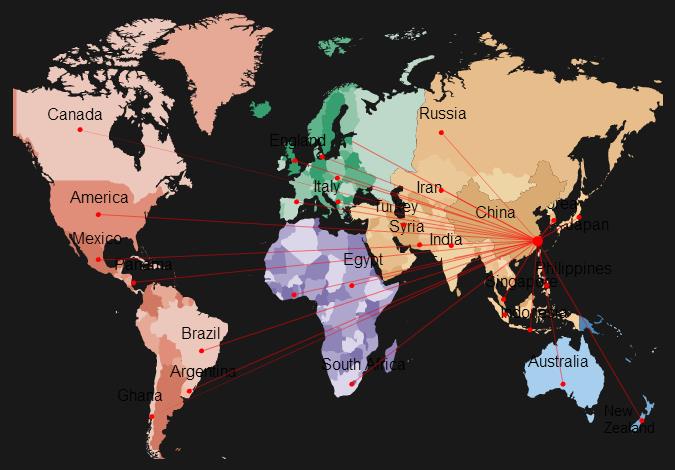Types of plywood
Softwood plywood
Softwood plywood is usually made either of cedar, Douglas fir or spruce, pine, and fir (collectively known as spruce-pine-fir or SPF) or redwood and is typically used for construction and industrial purposes.[10]
The most common dimension is 1.2 by 2.4 metres (3 ft 11 in × 7 ft 10 in) or the slightly larger imperial dimension of 4 feet × 8 feet. Plies vary in thickness from 1.4 mm to 4.3 mm. The number of plies—which is always odd—depends on the thickness and grade of the sheet. Roofing can use the thinner 5⁄8-inch (16 mm) plywood. Subfloors are at least 3⁄4 inch (19 mm) thick, the thickness depending on the distance between floor joists. Plywood for flooring applications is often tongue and groove (T&G); This prevents one board from moving up or down relative to its neighbor, providing a solid-feeling floor when the joints do not lie over joists. T&G plywood is usually found in the 1⁄2-to-1-inch (13 to 25 mm) range.
Hardwood plywood
Hardwood plywood is made out of wood from dicot trees (Oak, Beech and Mahogany) and used for demanding end uses. Hardwood plywood is characterized by its excellent strength, stiffness and resistance to creep. It has a high planar shear strength and impact resistance, which make it especially suitable for heavy-duty floor and wall structures. Oriented plywood construction has a high wheel-carrying capacity. Hardwood plywood has excellent surface hardness, and damage- and wear-resistance.[11]
Tropical plywood
Tropical plywood is made of mixed species of tropical timber. Originally from the Asian region, it is now also manufactured in African and South American countries. Tropical plywood is superior to softwood plywood due to its density, strength, evenness of layers, and high quality. It is usually sold at a premium in many markets if manufactured with high standards. Tropical plywood is widely used in the UK, Japan, United States, Taiwan, Korea, Dubai, and other countries worldwide. It is used for construction purposes in many regions due to its low cost. However, many countries’ forests have been over-harvested, including the Philippines, Malaysia and Indonesia, largely due to the demand for plywood production and export.[12]
Aircraft plywood
De Havilland DH-98 Mosquito was made of curved and glued veneers
High-strength plywood, also known as aircraft plywood, is made from mahogany, spruce and/or birch using adhesives with an increased resistance to heat and humidity. It was used in the construction of air assault gliders during World War II and also several fighter aircraft, most notably the multi-role British Mosquito. Nicknamed “The Wooden Wonder” plywood was used for the wing surfaces, and also flat sections such as bulkheads and the webs of the wing spars. The fuselage had exceptional rigidity from the bonded ply-balsa-ply ‘sandwich’ of its monocoque shell; elliptical in cross-section, it was formed in two separate mirror-image halves, using curved moulds.
Structural aircraft-grade plywood is most commonly manufactured from African mahogany, spruce or birch veneers that are bonded together in a hot press over hardwood cores of basswood or poplar or from European Birch veneers throughout. Basswood is another type of aviation-grade plywood that is lighter and more flexible than mahogany and birch plywood but has slightly less[citation needed] structural strength. Aviation-grade plywood is manufactured to a number of specifications including those outlined since 1931 in the Germanischer Lloyd Rules for Surveying and Testing of Plywood for Aircraft and MIL-P-607, the latter of which calls for shear testing after immersion in boiling water for three hours to verify the adhesive qualities between the plies and meets specifications.
Howard Hughes’ H-4 Hercules was constructed of plywood. The plane was built by the Hughes Aircraft Company employing a plywood-and-resin Duramold process.[13] The specialized wood veneer was made by Roddis Manufacturing in Marshfield, Wisconsin.[14]
Decorative plywood (overlaid plywood)
Usually faced with hardwood, including ash, oak, red oak, birch, maple, mahogany, Philippine mahogany (often called lauan, luan or meranti and having no relation to true mahogany), rosewood, teak and a large number of other hardwoods.
Flexible plywood
Flexible plywood is designed for making curved parts, a practice which dates back to the 1850s in furniture making.[citation needed]
Aircraft grade plywood, often Baltic birch, is made from three or more plies of birch, as thin as 1⁄64 inch (0.40 mm) thick in total, and is extremely strong and light. At 3⁄8 inch (9.5 mm) thick, mahogany three-ply “wiggle board” or “bendy board” come in 4 by 8 feet (1.2 m × 2.4 m) sheets with a very thin cross-grain central ply and two thicker exterior plies, either long grain on the sheet, or cross grain. Wiggle board is often glued together in two layers once it is formed into the desired curve, so that the final shape will be stiff and resist movement. Often, decorative wood veneers are added as a surface layer.
In the United Kingdom single-ply sheets of veneer were used to make stove pipe hats in Victorian times, so flexible modern plywood is sometimes known there as “hatters ply”,[citation needed] although the original material was not strictly plywood, but a single sheet of veneer.
Marine plywood
Marine plywood is manufactured from durable face and core veneers, with few defects so it performs longer in both humid and wet conditions and resists delaminating and fungal attack. Its construction is such that it can be used in environments where it is exposed to moisture for long periods. Each wood veneer will be from tropical hardwoods, have negligible core gap, limiting the chance of trapping water in the plywood and hence providing a solid and stable glue bond. It uses an exterior Weather and Boil Proof (WBP) glue similar to most exterior plywoods.
Marine plywood can be graded as being compliant with BS 1088, which is a British Standard for marine plywood and IS:710 is Bureau of Indian Standards (BIS) for marine grade plywood. There are few international standards for grading marine plywood and most of the standards are voluntary. Some marine plywood has a Lloyd’s of London stamp that certifies it to be BS 1088 compliant. Some plywood is also labeled based on the wood used to manufacture it. Examples of this are Okoumé or Meranti.
Other plywoods
Other types of plywoods include fire-retardant, moisture-resistant, wire mesh, sign-grade, and pressure-treated. However, the plywood may be treated with various chemicals to improve the plywood’s fireproofing. Each of these products is designed to fill a need in industry.
Baltic Birch plywood is a product of an area around the Baltic Sea. Originally manufactured for European cabinet makers but now popular in the United States as well. It is very stable composed of an inner void-free core of cross-banded birch plys with an exterior grade adhesive. The face veneers are thicker than traditional cabinet grade plywood.

Previous:Plywood



